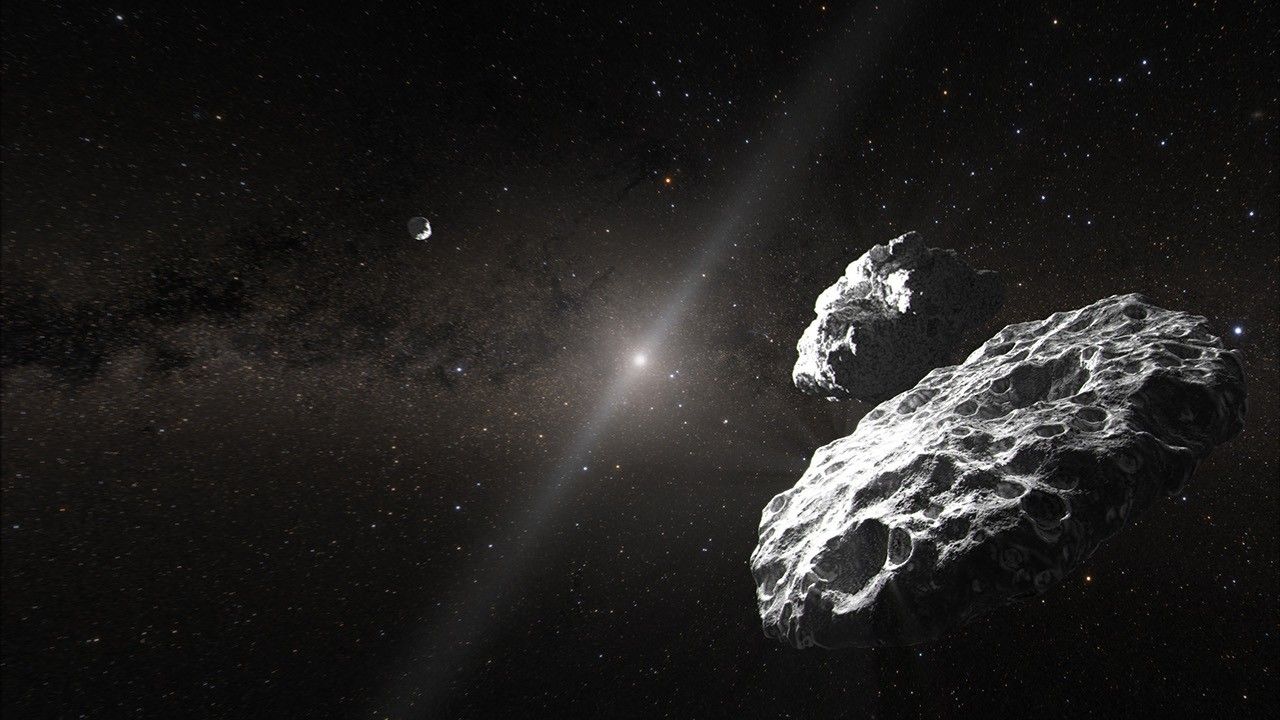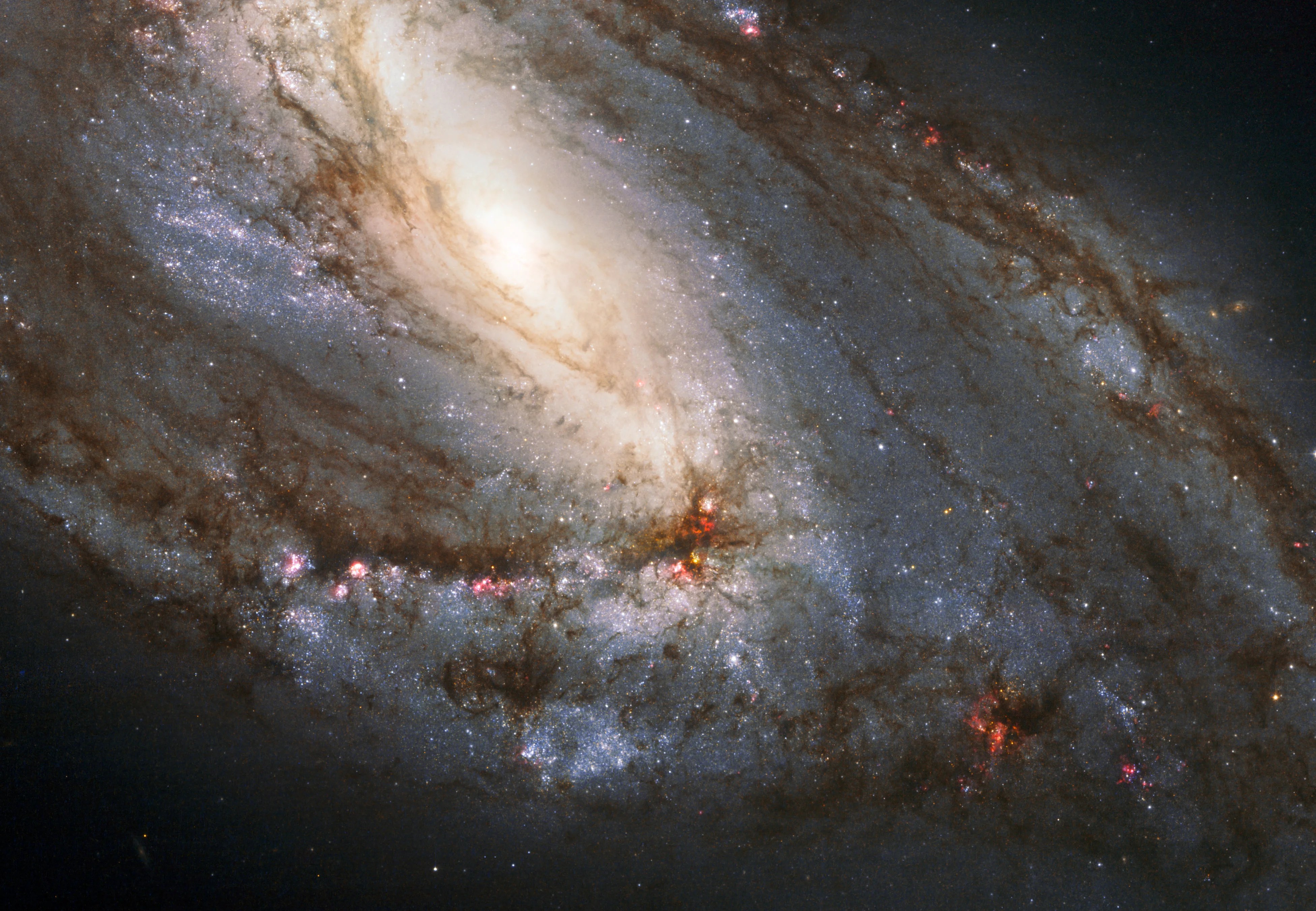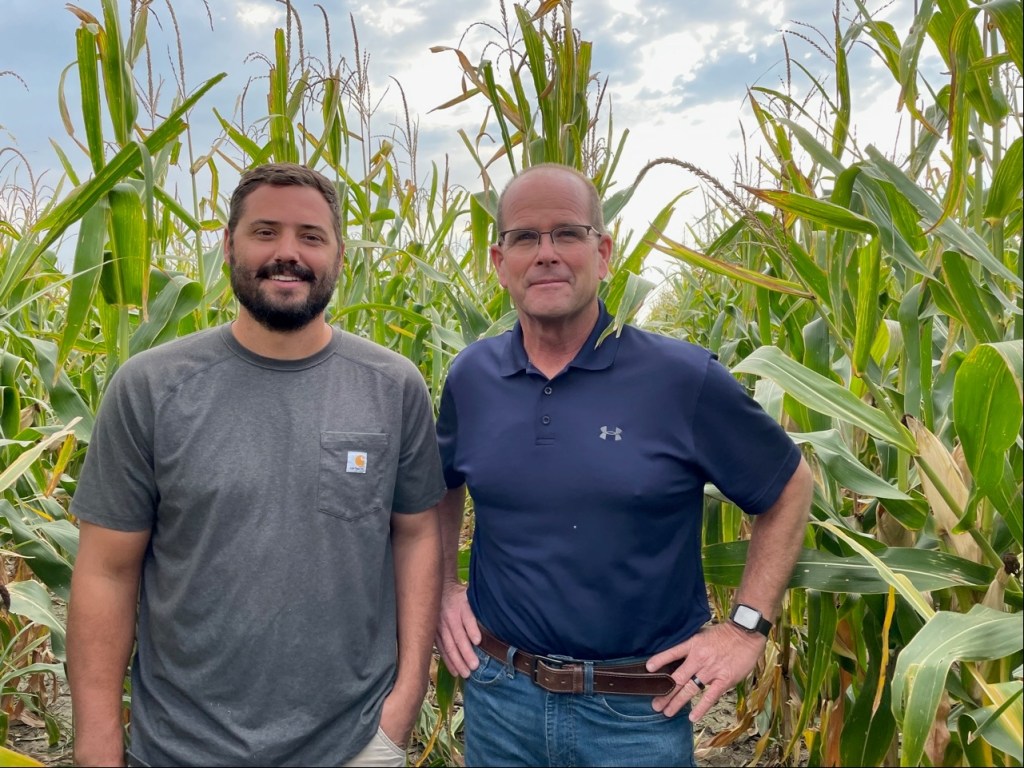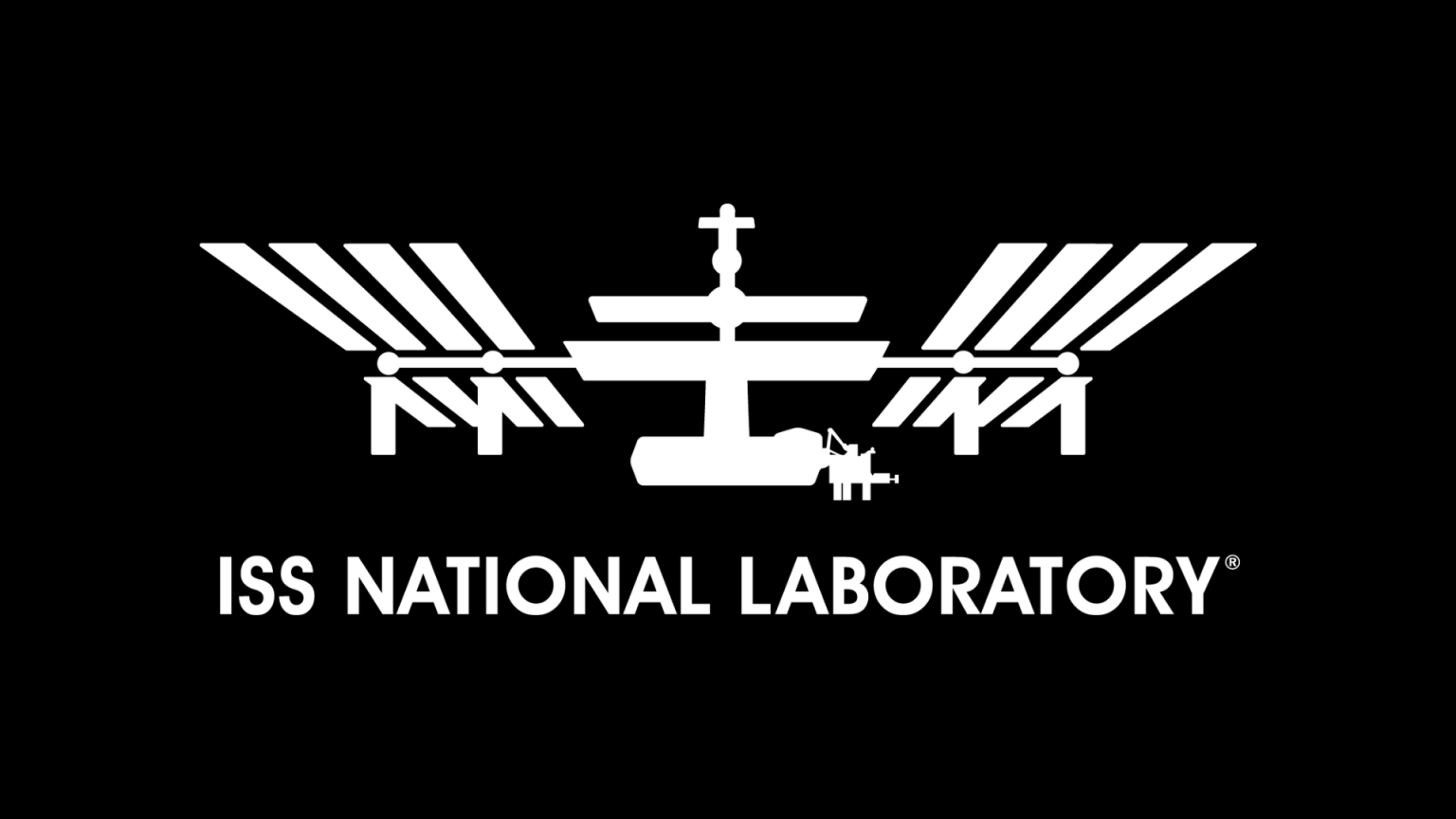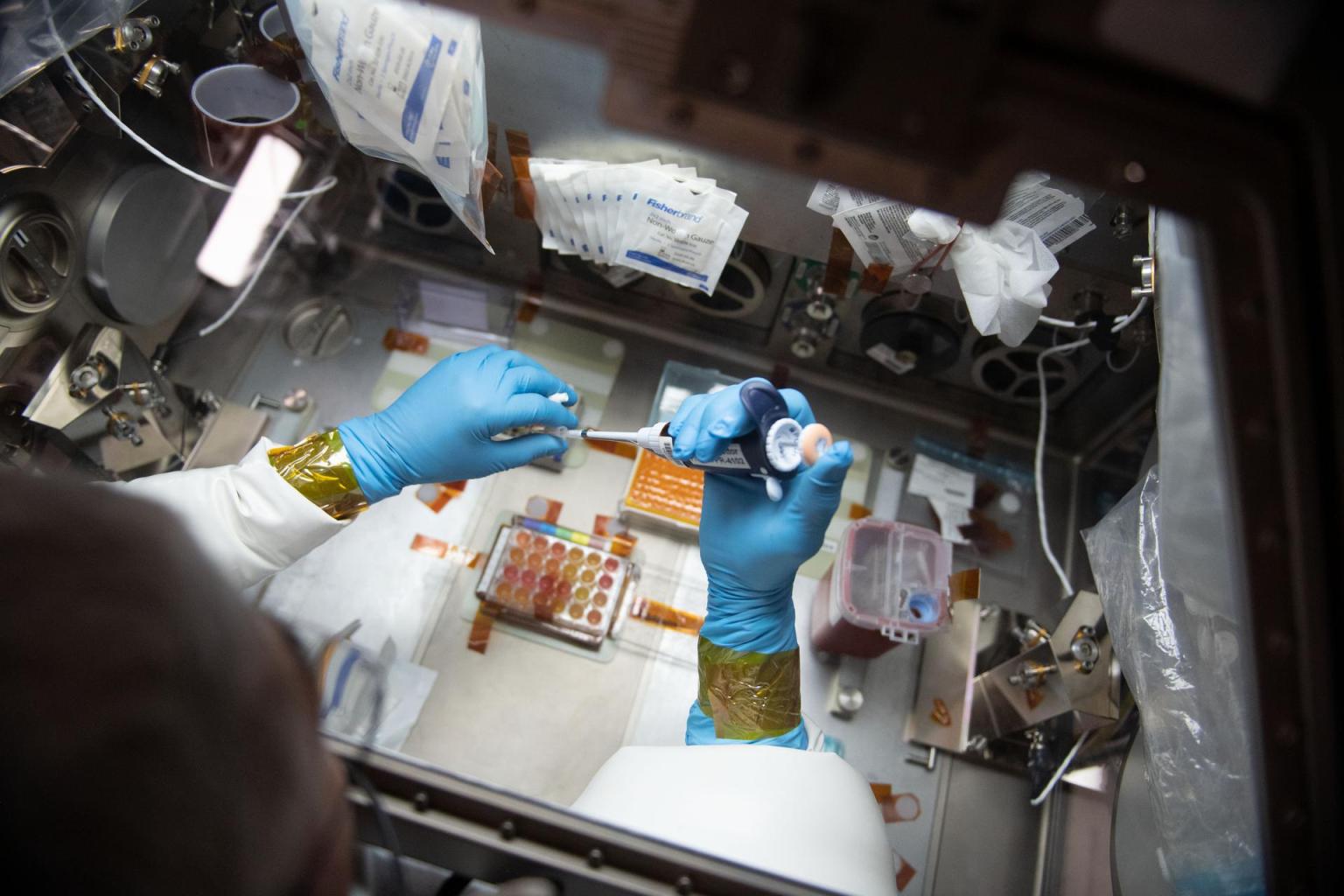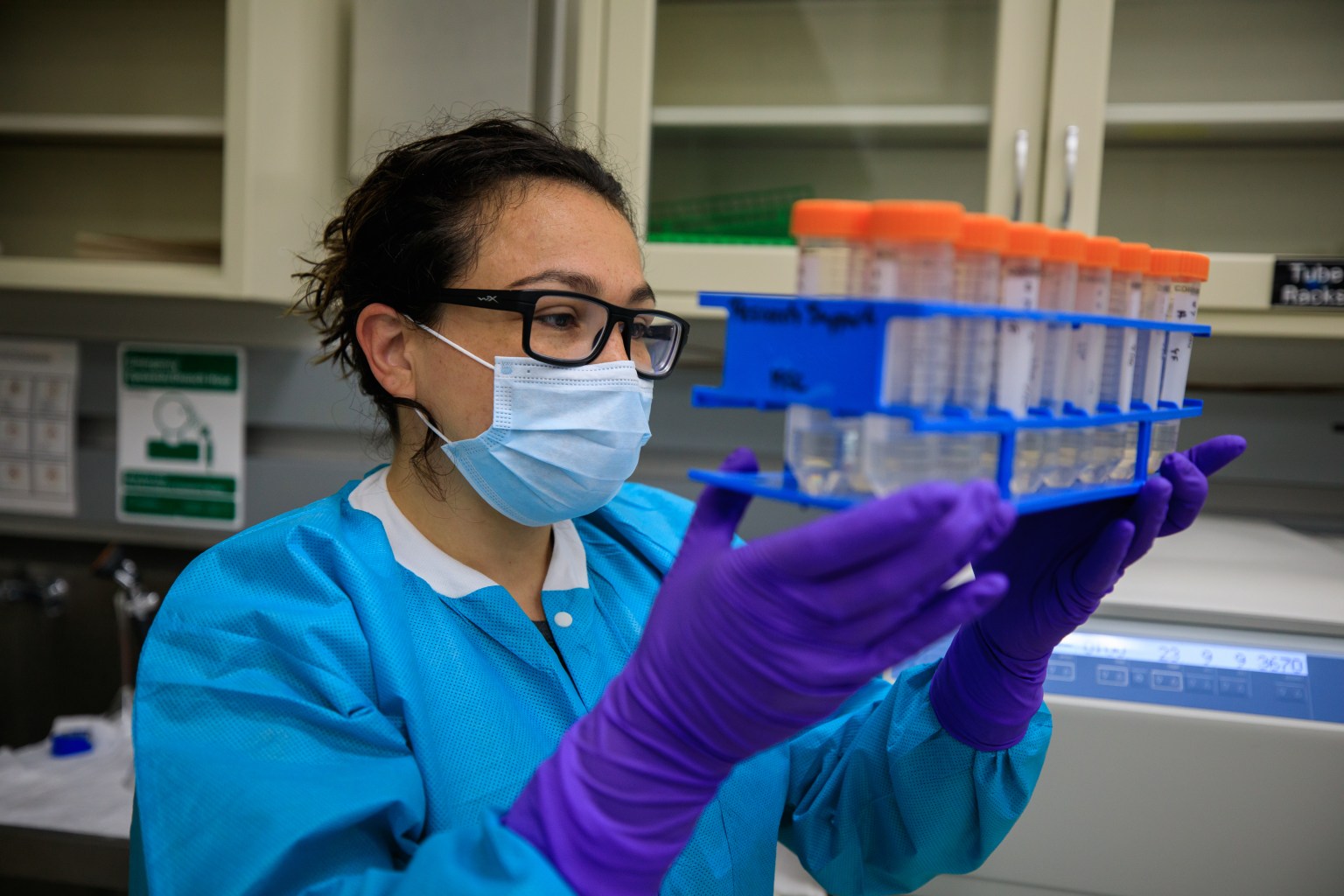On April 17, NASA astronauts Andrew Morgan and Jessica Meir wrap up their stay aboard the International Space Station. They return to Earth along with their Russian colleague, cosmonaut Oleg Skripochka.
During Morgan’s 272 days and Meir’s 205 days in space, the pair contributed to hundreds of scientific experiments aboard the orbiting laboratory. Before they come home, let us look back at their research-filled stay in microgravity.
July 20, 2019: The journey begins
Morgan launched on the Soyuz MS-13 crew ship along with Luca Parmitano of ESA (European Space Agency) and Alexander Skvortsov of Roscosmos to the station on the 50th anniversary of NASA’s first landing on the Moon.


July 29, 2019: Getting a grip
Soon after arriving to the space station, Morgan began working on research. One of the first investigations he worked on was the GRIP study. The experiment, sponsored by ESA (European Space Agency), observes how microgravity affects the abilities of astronauts to regulate grip force and upper limb trajectories when manipulating objects during a variety of movements.

August 5, 2019: Putting organ printing to the test
The BioFabrication Facility is researching whether the weightless environment of space may support the future fabrication of human organs. Morgan set up the device to begin test-printing tissues. He worked on this facility many times during his stay on station.

August 9, 2019: Satellites on station
Morgan continued the SPHERES experiment that has been going on aboard station for more than a decade. Here he monitors a pair of small, free-floating satellites known as SPHERES, or Synchronized Position Hold, Engage, Reorient, Experimental Satellites. Middle and high school students compete to design algorithms that autonomously control the basketball-sized SPHERES satellites aboard the station.

September 13, 2019: Crystal clear
Morgan conducted research for the Microgravity Crystals investigation that crystallizes a membrane protein that is integral to tumor growth and cancer survival. Results may support the development of cancer treatments that target the protein more effectively and with fewer side effects. Morgan is pictured setting up protein crystal samples for observing and photographing inside a microscope.

September 19, 2019: Keeping things cool
Morgan worked with fellow NASA astronaut Christina Koch to stow biological research samples into a science freezer. Some scientific samples need to be stored in cold facilities such as the General Laboratory Active Cryogenic ISS Experiment Refrigerator (GLACIER) to preserve the data produced in space for researchers to analyze on Earth.

September 25, 2019: Meir joins the crew
The space station gained three new residents. The Soyuz MS-15 crew ship carried Meir, along with Roscosmos cosmonaut Oleg Skripochka and spaceflight participant Hazzaa Ali Almansoori of the United Arab Emirates, into space after launching from Kazakhstan. The Soyuz would dock a few hours later to the space station, where Meir would become the fourth member of the NASA Astronaut Class of 2013 aboard.


October 16, 2019: Looking back at Earth
The second-largest mountain lake in the world, Issyk-Kul Lake, in the central Asian nation of Kyrgyzstan, is pictured surrounded by the snow-capped Tian Shen mountains in this image taken from the space station while it orbited 252 miles above southeastern Kazakhstan. Crew Earth Observations record how the planet is changing over time, from human-caused changes, such as urban growth and reservoir construction, to natural dynamic events, such as hurricanes, floods and volcanic eruptions.

October 24, 2019: Bringing the heat
One of the jobs of the space station crew is to run and maintain the science hardware. Meir worked on the Combustion Integrated Rack (CIR), a facility in which combustion experiments can be performed in microgravity. The CIR, along with facilities such as the Microgravity Science Glovebox (MSG), create a secure and safe environment in which to study flames without putting the crew in danger.

October 27, 2019: It’s easy being green
For multiple months while Meir and Morgan were living in space, they shared the station with a different type of living thing: Mizuna mustard greens. The pair, along with their crew mates, helped water and care for the plants as a part of the Veg-04B experiment. This investigation is part of a phased research project to address the need for a continuous fresh food production system in space and focuses on the effects of light quality and fertilizer on a leafy crop.


November 4, 2019: Cygnus arrives
Koch, Meir and Morgan peered through the space station’s “window to the world,” the cupola, while on robotics duty monitoring the arrival and capture of the Northrop Grumman Cygnus space freighter. Cygnus carried new research and supplies to the station on the company’s 12th commercial resupply servicing mission to the station.

November 2019-January 2020: Fixing AMS
Morgan, along with Parmitano, successfully completed a series of four challenging spacewalks to repair the Alpha Magnetic Spectrometer (AMS-02). AMS has provided hundreds of researchers around the globe with data that can help piece together the puzzle of what the universe is made of and how it began.


November 26, 2019: Science in the glovebox
Meir and Morgan worked together on research operations inside the Japanese Kibo lab module’s Life Sciences Glovebox (LSG). They were studying mice for the Rodent Research-14 investigation, which observes how microgravity affects the body on a cellular and organ level.

December 9, 2019: Preventing bone and muscle loss
Meir installed the Bone Densitometer in an EXPRESS (EXpedite the PRocessing of Experiments to Space Station) rack. The Bone Densitometer enables the imaging of rodent bones for the Rodent Research-19 experiment that investigated proteins that may prevent muscle and bone loss in space.

December 9, 2019: A check up
Medical checks are an important part of ensuring astronauts stay healthy, and for collecting data for a number of investigations such as spaceflight standard measures. Here Morgan is floating with a stethoscope for medical checks inside the U.S. Destiny laboratory module after an exercise session.

February 2020: A closer look at bones
Both Morgan and Meir worked on the OsteoOmics study in February. The goal of the experiment is to compare bone cells in space with samples on Earth that are levitated magnetically.


February 16, 2020: Creating disorder
Meir configures the Light Microscopy Module (LMM) for the Advanced Colloids Experiment-Temperature-4 (ACE-T-4) study. Introducing disorder to a crystalline system in a controlled way can form glass. ACE-T-4 examines the transition of an ordered crystal to a disordered glass to determine how increasing disorder affects its properties.

March 5, 2020: A picture of our planet
Looking back at our planet is a favorite pastime of many astronauts. Morgan took many photos of our Earth during his time in space. Some were taken out of this Window Observational Research Facility (WORF), which can house Earth science remote sensing instruments and is a perfect spot for taking Earth observation photos.

March 13, 2020: Treating cardiac abnormalities
Meir and Morgan helped set up the MVP Cell-03 investigation that induces stem cells to generate heart precursor cells. Those cells are then cultured on the space station to analyze and compare with cultures grown on Earth. Results may help treat spaceflight-induced cardiac abnormalities and contribute to accelerated development and reduced cost of drug therapies on Earth.


March 25, 2020: A scientific echo
The walls of some blood vessels become thicker and stiffer in space. To better understand the effects of spaceflight, Meir uses an ultrasound to monitor her blood vessels as a part of the Vascular Echo experiment.

April 3, 2020: Returning research
Meir gathers frozen research samples stowed in a space station science freezer before loading them into a SpaceX Dragon resupply ship to return to Earth for analysis.

Although Morgan and Meir’s chapter of research aboard the orbiting laboratory ends with their return to Earth on April 17, their participation in human research continues as scientists monitor their bodies’ acclimation back to gravity for months – or even years – after their landing. Science aboard the space station also continues. Innovative investigations that seek to benefit humans on Earth and further our exploration of the solar system are ongoing. Follow @ISS_Research to keep up with the science happening aboard your orbiting laboratory.


